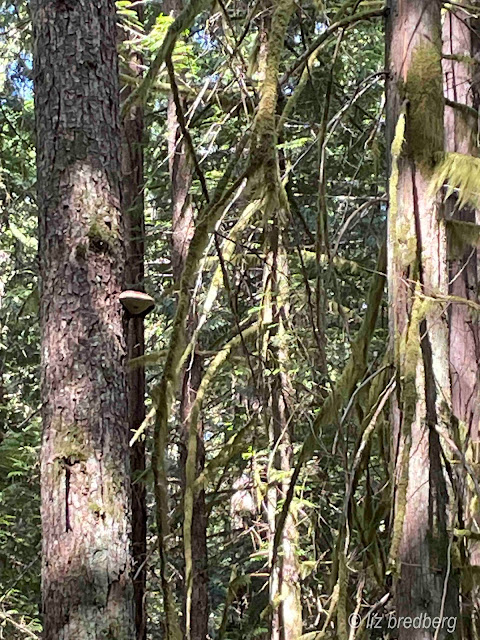6 June
The forest ringing the Hamilton Marsh is -- yes, --ringing is the right word. This morning it chimed with bird song. In deep woods such as these, spotting birds can be tricky, but we were able to identify marsh wrens, black-headed grosbeaks, warbling vireos, and (possibly) red-eyed vireos by their songs, as well as the inevitable raven.
We watched as a hairy woodpecker tended her nest. One almost fledged youngster emerged, looking for breakfast.
The salmonberries are ripening.
The light in the forest illuminated this huckleberry, sprouting, as they do, from a downed log.
The bloom on this thimbleberry was visited by a what iNaturalist tells us is a Dasysyrphus intrudens--a fly, and a pollinator.
A stand of new mica cap mushrooms has emerged,
as has a large and robust conk, possibly a northern red belt.
A butterfly rested on the path.
We're not certain what it is and would welcome suggestions. From iNaturalist, it may belong to a group known as Angles.
In the marsh, there was a distressing view of a cloud of smoke from a forest fire burning out of control nearby
The forest on the far side of the marsh continues to flourish, although we noted that the water level in the marsh itself was sinking.
A close look shows a dragonfly clutched in the red-winged blackbird's claw.
One of myriad blue dashers sat for a photo.
A red squirrel, his fine fur luxuriant, watched us as we left the marsh.
Although no longer living, its growth of shelf fungi, salal, and huckleberry demonstrates the vitality of the forest, which often outlives its host trees.
















Comments
Post a Comment